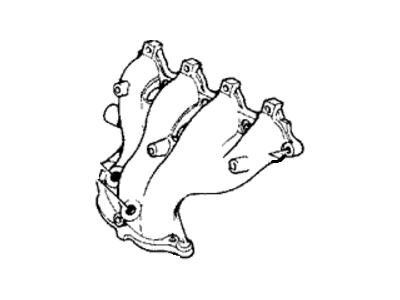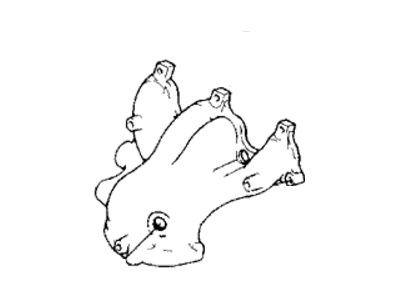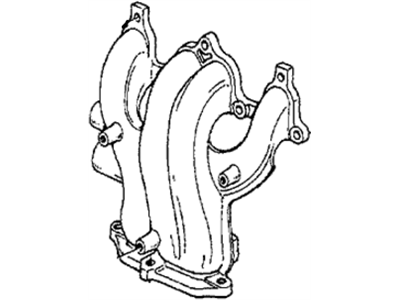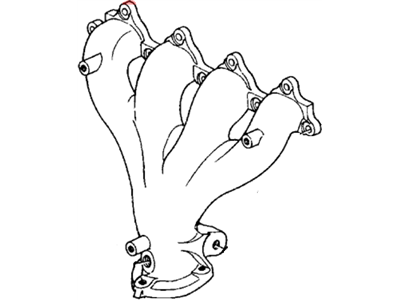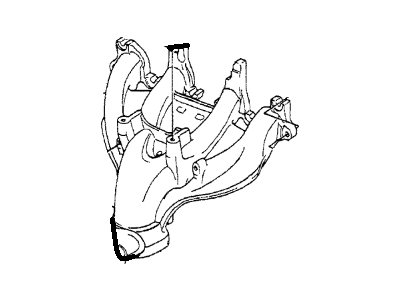×
- Hello
- Login or Register
- Quick Links
- Live Chat
- Track Order
- Parts Availability
- RMA
- Help Center
- Contact Us
- Shop for
- Honda Parts
- Honda Accessories

My Garage
My Account
Cart
Genuine Honda Prelude Exhaust Manifold
Engine Exhaust Manifold- Select Vehicle by Model
- Select Vehicle by VIN
Select Vehicle by Model
orMake
Model
Year
Select Vehicle by VIN
For the most accurate results, select vehicle by your VIN (Vehicle Identification Number).
17 Exhaust Manifolds found
Honda Prelude Manifold, Exhuast
Part Number: 18100-PK3-A00$265.63 MSRP: $378.39You Save: $112.76 (30%)Honda Prelude Manifold, Exhuast
Part Number: 18100-PK1-661$265.63 MSRP: $378.39You Save: $112.76 (30%)Honda Prelude Manifold, Exhuast
Part Number: 18100-PK1-680$265.63 MSRP: $378.39You Save: $112.76 (30%)Honda Prelude Manifold, Exhuast
Part Number: 18100-PK1-681$265.63 MSRP: $378.39You Save: $112.76 (30%)Honda Prelude Manifold, Exhuast
Part Number: 18100-PJ0-660$285.12 MSRP: $406.15You Save: $121.03 (30%)
Honda Prelude Exhaust Manifold
The Exhaust Manifold of Honda Prelude vehicles.engine exhaust manifold is very useful in that many hot exhaust gases from the car's engine to the exhaust system that is required for efficient engine performance. It is located at the top end of the exhaust system where the exhausts from several cylinder are merged and directed through the catalytic converter and muffler. This design assists in eliminating intake reversion which can otherwise degrade the performance of the engine by letting gases go back to the intake chamber. For many years now, Honda Prelude models have used exhaust manifolds which vary in types with most of them being cast iron or stainless steel. There are some products termed as headers, which are built to eliminate the restriction in order to further improve performance by optimizing the exhaust gas velocity. The main points of contradistinction of these styles are bespoke based on the construction and the enhanced performance advantageous to headers in contrast to manifolds. Periodical check up of the exhaust manifold is very vital since exhaust manifold failure can lead to poor vehicle performance and other health complications as a result of exhaust leaks.
In search of affordable OEM Honda Prelude Exhaust Manifold? Consider browsing through our extensive inventory of genuine Honda Prelude Exhaust Manifold. Not only do we provide market-leading prices and a manufacturer's warranty, but we also pride ourselves on exceptional customer service and swift delivery.
Honda Prelude Exhaust Manifold Parts Questions & Experts Answers
- Q: How do you remove and install the exhaust manifold on Honda Prelude?A:The following is the procedure to unbolt and replace the exhaust manifold; The vehicle should be turned off and the exhaust cooled down then remove the negative terminal of the battery. For 2.2L and 2.3L engines, lift the vehicle and remove the Oxygen Sensor connector, if necessary. Take off the exhaust manifold upper cover and any heat shields; also loosen the nuts joining the manifold to front exhaust pipe but note that the gasket is to be discarded. Sustain the pipe and loose the manifold bracket bolts; then, with equal spacing and crossing each other's path, remove manifold nuts. Scrub the mating surfaces and if possible fit the lower manifold housing before setting the manifold in place with a new gasket and nuts. Final, tighten the support bracket bolts together with the manifold nuts in the cross-wise pattern to make sure they are equally tight, after which, any heat insulators to be reinstated and finally the upper manifold cover. For 2.7L engines turn the negative battery terminal, drain the coolant and take off the Radiator. Remove the starter cable and depending on the model perhaps the vacuum control box for space. Once the vehicle is RAISED, SIMPLY REMOVED the front wheels and splash shield, furiously disconnect the front Oxygen sensor and exhaust pipe. The heat shield bolts and EGR crossover pipe should be loosened; the manifold nuts should also be loosened. New gaskets and nuts must be placed and 'star-wedge-star' tight, then replace the EGR crossover pipe and heat shields. Screw the exhaust pipe back and connect the front Oxygen sensor and then fix the center beam, the splash shield and the front wheels. For the DL engine, lift the car, remove the engine tray and disconnect the exhaust at the manifold. Lower the vehicle, take off the heat shield and undo the manifold. Scrub the surfaces, place a fresh gasket and put the manifold in place, fastening the nuts and heat shield bolts then refit the exhaust pipe. Last of all, join the negative battery terminal and input the radio security code, and turn the ignition in order to look for any signs of leakage.
Related Honda Prelude Parts
Browse by Year
2001 Exhaust Manifold 2000 Exhaust Manifold 1999 Exhaust Manifold 1998 Exhaust Manifold 1997 Exhaust Manifold 1996 Exhaust Manifold 1995 Exhaust Manifold 1994 Exhaust Manifold 1993 Exhaust Manifold 1992 Exhaust Manifold 1991 Exhaust Manifold 1990 Exhaust Manifold 1989 Exhaust Manifold 1988 Exhaust Manifold 1987 Exhaust Manifold 1986 Exhaust Manifold 1985 Exhaust Manifold 1984 Exhaust Manifold 1983 Exhaust Manifold 1982 Exhaust Manifold 1981 Exhaust Manifold 1980 Exhaust Manifold 1979 Exhaust Manifold
